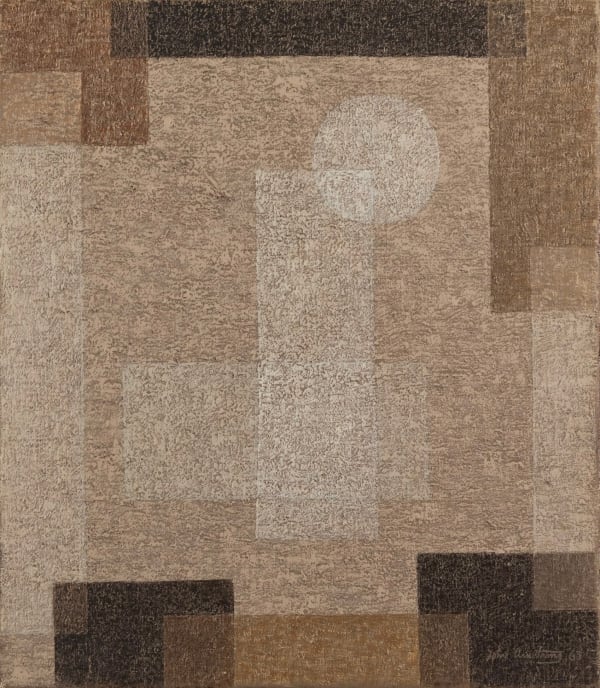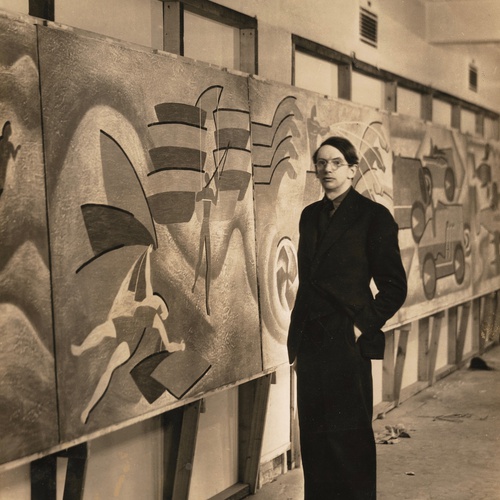John Armstrong 1893-1973
John Armstrong was a painter of imaginative subjects, designer of film and stage sets, mural painter and book illustrator.
Born in Hastings, Sussex, John Rutherford Armstrong attended St Paul's School, London, and studied law at St John's College, Oxford, before taking up art at St John's Wood School of Art (1913-14). He served in the Royal Field Artillery (1914-19) before returning to St John's Wood School for a short period after the war. His first one-man exhibition was at the Leicester Galleries in 1928, where he first met members of the Unit One group, joining them for their 1933 exhibition. It was after this that Armstrong's work began to develop a Surrealist character.
Much of Armstrong's oeuvre has its foundation in classical legend, landscape, or imagery, surely understandable given his classical education and WW1 service in the Near East. Varied Greek vase forms regularly make an appearance in his work from the mid-1930s, notably in his GPO poster 'Pheidippides 490BC' (1935). He also produced poster designs for Royal Dutch Shell, such as 'Newlands Corner'. In the late '30s, Armstrong would typically present his decorative work as distinct from his symbolist or surreal art, in the manner of a fresco panel or trompe l'oeil. After the war, Armstrong spent a short time in Lamorna, Cornwall, before returning to London.
Armstrong was commissioned to design and paint murals for the ceiling of Bristol City Hall's Council Chamber (1956) and the dining room of Shell Mex House (1933), the designs for which are now in the National Motor Museum, Beaulieu. His theatrical décor includes designs for 'Riverside Nights', 'Macbeth' and 'Measure for Measure' (all Old Vic); 'The Magic Flute' (Sadler's Wells Opera Company); the ballet 'Facade'; and a group of films produced by Sir Alexander Korda including 'The Private Life of Henry VIII', 'The Scarlet Pimpernel' and 'Rembrandt'.
A solo exhibition at the Lefevre Gallery, featuring typically English landscapes with Surrealist elements, was praised by critics. Armstrong was an Official War Artist from 1940-45 and had paintings shown at the associated WAAC 'Britain at War' exhibition at the Museum of Modern Art in New York in May 1941. A memorial exhibition was held at the Royal Academy in 1975 and a recent retrospective was held at Penlee House.
His work is included in many notable collections such as the Courtauld Gallery, V&A Museum, Bristol Museum, Victoria Art Gallery, Bath, Pallant House Gallery, Ferens Art Gallery, MIMA, Hepworth Wakefield, Leeds Art Gallery, Imperial War Museum, Tate, Upton House, Government Art Collection, Royal Air Force Museum, National Museum Wales, National Galleries of Scotland, Ingram Collection, Government Art Collection, and the Royal Academy.




